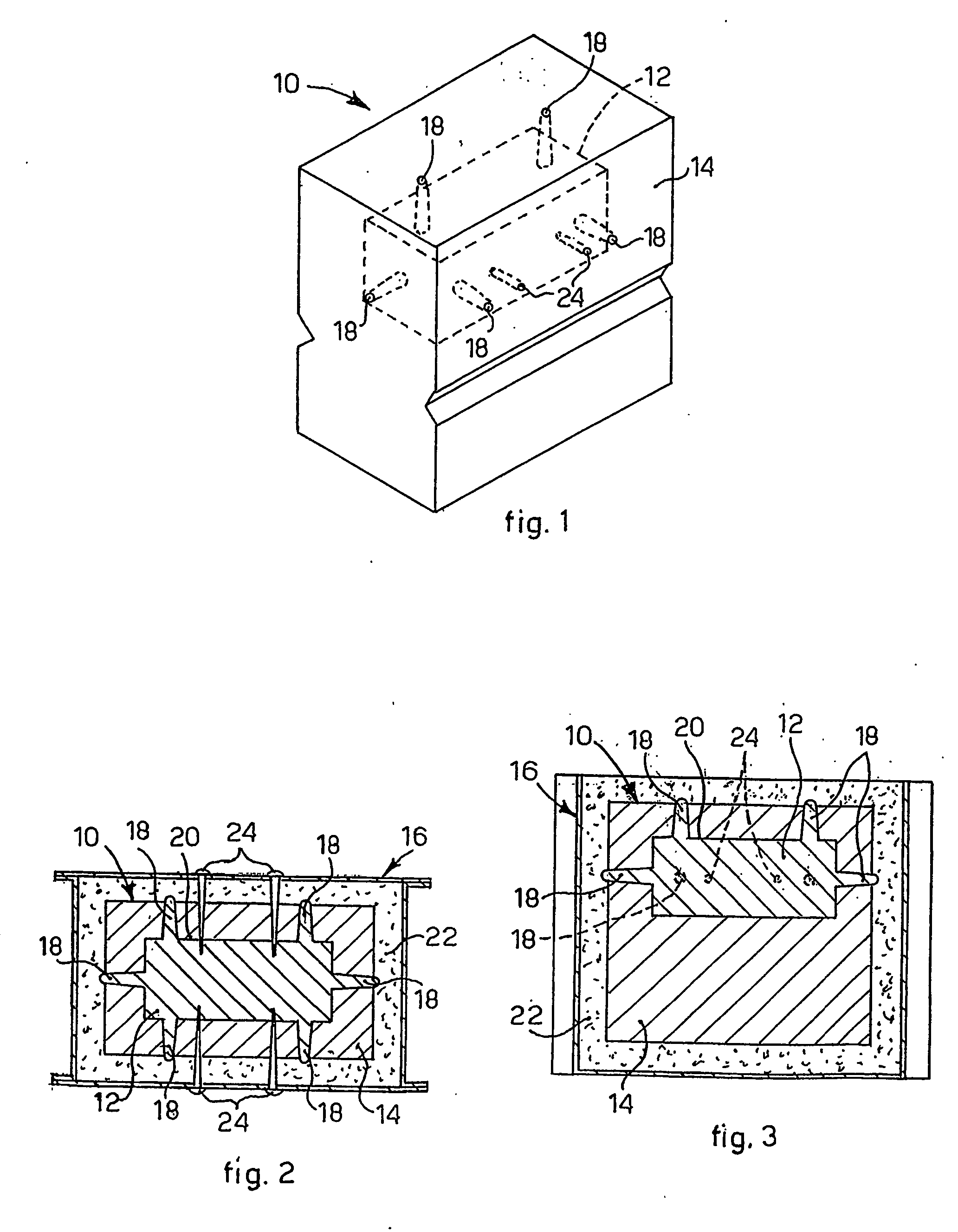Method to produce an element subject to wear, and element subject to wear thus obtained
a technology of wear and wear, applied in metal extrusion, electrical equipment, foundry moulding equipment, etc., can solve the problems of not being able to obtain mechanical characteristics such as to be used in any application and field, requiring hardness properties, etc., and achieve the effect of reducing the cost of setting
- Summary
- Abstract
- Description
- Claims
- Application Information
AI Technical Summary
Benefits of technology
Problems solved by technology
Method used
Image
Examples
Embodiment Construction
[0023] With reference to FIG. 1, a method according to the invention to produce an element 10 subject to wear, such as a mechanical member, an abrasion or crushing tool or suchlike, comprising a core 12 or panel, made of ceramic material, and a metal matrix 14, provides the following steps in all: preparation and forming of the core 12; arrangement of the core 12 in a sand mold 16 (FIGS. 2 and 3); casting of a molten metal material into the mold 16 to form the matrix 14, cooling of the element 10 and removal of the mold 16, quenching of the element 10 and possible finishing operations.
[0024] In the first step the core 12 is made by aggregating two distinct components with a ceramic material base, easily found on the market; the first component comprises as its main compound aluminum oxide in α form, or α-Al2O3, and a second component comprises a eutectic compound of α-Al2O3 and ZrO2.
[0025] In this case, the first component has a complex polycrystalline structure and comprises 94.0...
PUM
| Property | Measurement | Unit |
|---|---|---|
| temperature | aaaaa | aaaaa |
| size | aaaaa | aaaaa |
| temperature | aaaaa | aaaaa |
Abstract
Description
Claims
Application Information
 Login to View More
Login to View More - R&D
- Intellectual Property
- Life Sciences
- Materials
- Tech Scout
- Unparalleled Data Quality
- Higher Quality Content
- 60% Fewer Hallucinations
Browse by: Latest US Patents, China's latest patents, Technical Efficacy Thesaurus, Application Domain, Technology Topic, Popular Technical Reports.
© 2025 PatSnap. All rights reserved.Legal|Privacy policy|Modern Slavery Act Transparency Statement|Sitemap|About US| Contact US: help@patsnap.com


